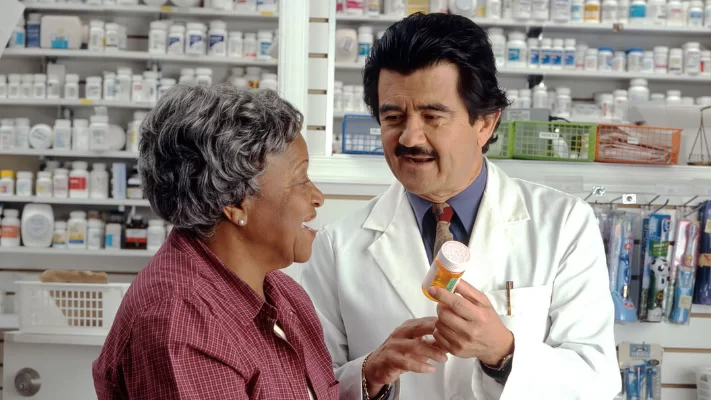 Healthcare expenses are a major concern for many Americans. Million still lack health insurance, and even people who are insured struggle with high premiums, deductibles, copayments, and out-of-pocket expenses. Approximately 30 million people in the United States use pawn shops each year, but you don’t want to find yourself in the position of selling your prized possessions to afford medical treatment. How can you get the care you need without selling off assets, going into debt, and possibly risking bankruptcy? Here are six ways you can save on your medical bills.
Healthcare expenses are a major concern for many Americans. Million still lack health insurance, and even people who are insured struggle with high premiums, deductibles, copayments, and out-of-pocket expenses. Approximately 30 million people in the United States use pawn shops each year, but you don’t want to find yourself in the position of selling your prized possessions to afford medical treatment. How can you get the care you need without selling off assets, going into debt, and possibly risking bankruptcy? Here are six ways you can save on your medical bills.
1. Spend More for Better Insurance
Many consumers opt for health insurance plans with the least expensive monthly premium, but these plans can end up costing you more down the road. A cheaper plan might not cover all the procedures and tests you and your family may need. It may also offer fewer in-network providers, which means that it may not cover services from the doctor who’s best for you.
Typically, health insurance plans with lower premiums have higher deductibles (and vice versa). Choosing a plan with a low premium could mean that you’ll have to pay for thousands of dollars in services before the plan will begin to cover your expenses. A cheaper plan might also come with higher copayments for every physician visit. This can make the plan prohibitively expensive if you have a chronic condition that requires many visits per year or if your kids see the pediatrician frequently. You could actually save money by opting for a plan with a higher premium but a smaller deductible and lower copayments.
2. Find Out If You’re Entitled to Subsidies
The Affordable Care Act has made health insurance possible for millions of Americans. Depending on your income, you may be eligible for government subsidies that will pay for a substantial portion of your monthly premiums. You can learn about subsidies and buy health insurance for yourself and your family through Healthcare.gov or the website for your state’s healthcare exchange. Alternatively, you can contact a broker in your area. Individuals and families who meet certain income requirements can receive cost-sharing subsidies as well as advance premium tax credits that help pay for premiums.
3. Research the Costs of Tests and Procedures
Tests, X-rays, and procedures cost much more at some medical facilities than others. The difference could equate to hundreds or even thousands of dollars for the exact same test. Radiology facilities frequently cost less than hospitals do, so you could pay significantly more for a radiologist to review your test results at a hospital than for the same radiologist to review them at a separate facility.
Whether you have ongoing back pain (which is the second most common reason for physician visits) or you’re trying to manage the costs of an urgent health situation, you can learn how to make your care more affordable. Find out what the fair price is for your test or procedure in your area through websites like HealthcareBluebook.com. Before you undergo a test or procedure, inquire about the cost first. If your hospital or other facility charges more than what is reasonable, ask your physician about your options. Facilities with fair prices tend to be upfront about those prices when you call, while higher-priced facilities will stall and say they’ll get back to you.
4. Learn How to Save on Medications
Many people struggle to afford their prescriptions. There are ways to reduce medication costs significantly. One way is to ask your doctor to provide 90-day supplies of medications you take on an ongoing basis, instead of continuing to refill your prescriptions once a month. Some insurers provide substantial discounts for 90-day supplies. Your plan may require you to obtain your prescriptions at a particular pharmacy or through a mail-order pharmacy. With a 90-day supply, your per-pill cost might end up being lower than with a 30-day supply.
You can also ask your doctor if a low-cost generic version of your medication is available. Your physician may also be able to provide you with free samples of drugs they’ve obtained from pharmaceutical reps. Finally, find out if there is an over-the-counter medication that would work as well as the by-prescription-only version. Depending on how high your prescription copayments are, you may pay significantly less for the over-the-counter option.
5. Review Your Health Plan Carefully
It’s well worth investing some time in reading about the policies that govern your insurance plan. You’ll need to know which expenses are covered and which aren’t. It’s especially important to note which providers are in your network, since going to a physician who is not in your network will usually cost more. Learn about services and treatments for which you’ll need to obtain a referral from your primary care provider or preauthorization from the insurer. If any part of your policy is unclear, call the insurance company and ask a representative for information. You’ll find a customer service number on the back of your card.
6. Save on Urgent Care
It’s crucial for people to have dental checkups every six months, regardless of age. But many people can’t afford preventative care like dental checkups and annual physicals — and often the result is that they end up in the emergency room. Whether or not you have health insurance, you should investigate the costs of alternatives to the emergency room. Treatment at an urgent care center, a convenient care clinic, or a retail health clinic in a supermarket or drugstore will cost far less than treatment in the emergency room. If you learn about urgent care alternatives before you or your family members need them, you’ll know where to go when a medical problem arises.
Medical expenses are a major source of stress for many Americans. But if you put some time and effort into researching plans, costs, and medication options, you can significantly lower your expenses. If you learn to save on healthcare, you’ll reduce your chances of going into debt or seeing bills you can’t pay pile up.






